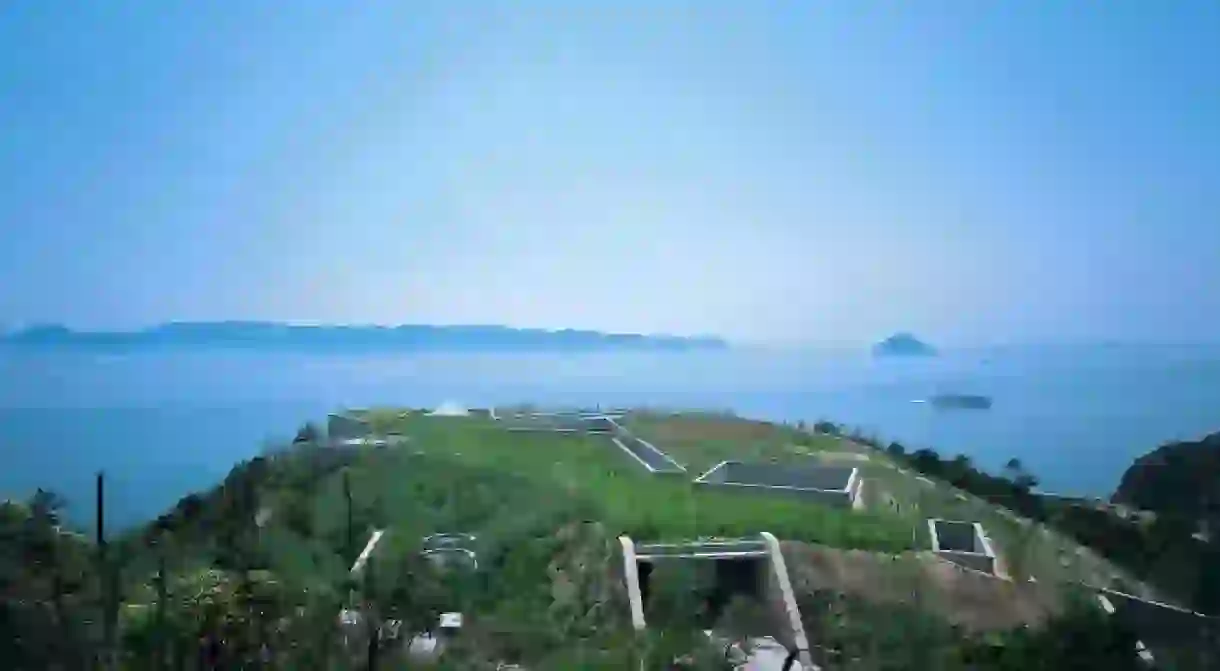The World's Best Museum: Chichu Art Museum in Naoshima

Considered to be one of the world’s best museum for contemporary art, Chichu Art Museum, designed by Tadao Ando and nestled deep underground on the island of Naoshima, is both an intimate environment and a world-class institution. We explore Chichu’s collections and investigate what makes this Japanese museum so special.
The first space exhibits five paintings from Claude Monet’s Water Lilies series. More so than any other impressionist painter, Claude Monet was fascinated by the effect that light had on the subjects of his paintings. The Rouen Cathedral series, 30 paintings depicting the facade of the famous French cathedral, is a testament to this fascination. It portrays the building in varying light conditions. The Water Lilies series is the apotheosis of this style and fascination: the entire series is composed of 250 paintings portraying the ponds of the artist’s estate in Giverny. According to a famous anecdote, Monet would work on several paintings at the same time, but only for a few minutes each day in an attempt to capture the uniqueness of light in a fading moment. The Monet space at Chichu is the perfect setting for the unique and crafted nature of Water Lilies, since it shows the paintings enveloped by the museum’s natural light.

Chichu’s next space continues with the theme, but uses three-dimensional art to experiment with and carry light, in a hall filled with the works of American conceptual and minimal artist Walter De Maria, best known for his installations. Following the success of his Seen/Unseen Known/Unknown artworks on Naoshima, in 2000, De Maria was invited to create an installation for one of the spaces of Chichu Art Museum.
De Maria’s installation consists of a central, polished granite sphere of 2,2 meters in diameter, combined with 27 gilded geometric sculptures strategically positioned around the room. The natural light that enters the room through various openings in the ceiling creates spectacular lighting effects that vary throughout the day. The installation is even more astonishing at dusk, when the warm light of the setting sun fills the room and is amplified by the golden sculptures.

Throughout his entire artistic life, James Turrell has worked directly with light and space to create mind-bending installations which challenge viewers’ perceptions. Chichu Art Museum hosts three different installations that mark the distinct phases of Turrell’s artistic research. When visitors enter Afrum – Pale Blue (1968) they see a blue shape, which starts appearing out of thin air, creating the impression of having mass and weight while it is in fact pure light. Open Field (2000) presents the viewer with two connected rooms, one of which – through the expert use of light and perspective – appears to be a solid canvas. Only upon closer inspection does the illusion reveal itself. Open Sky (2004) belongs to the Skyspace series, in which, through an opening in the roof, the sky itself becomes an integral part of the installation. The museum organises special night visits for those who want to experience the full spectrum of Turrell’s installations.

The artistry shown by Japanese architect Tadao Ando in designing Chichu has earned him an honorary spot amongst the artists of the museum. Chichu is considered a work of art in its own right. The quiet strength of the architectural details, the way the museum fuses with the natural environment of the island of Naoshima, and the delicate balance between concrete, iron, glass, and wood, and most importantly light, lends Chichu a place among the most powerful cultural and artistic experiences in the world.

Chichu Art Museum is part of the Benesse Art Site Naoshima, a collective name for various forms of artistic expression built the on the islands of Naoshima, Teshima, and Inujima. Benesse aims to achieve a balance between art galleries, museums, and high-end hotel experiences while promoting the natural beauty of the Seto Inland Sea area.

Opening hours: March 1 – September 30 10am-6pm; October 1 – last day of February 10am-5pm.













